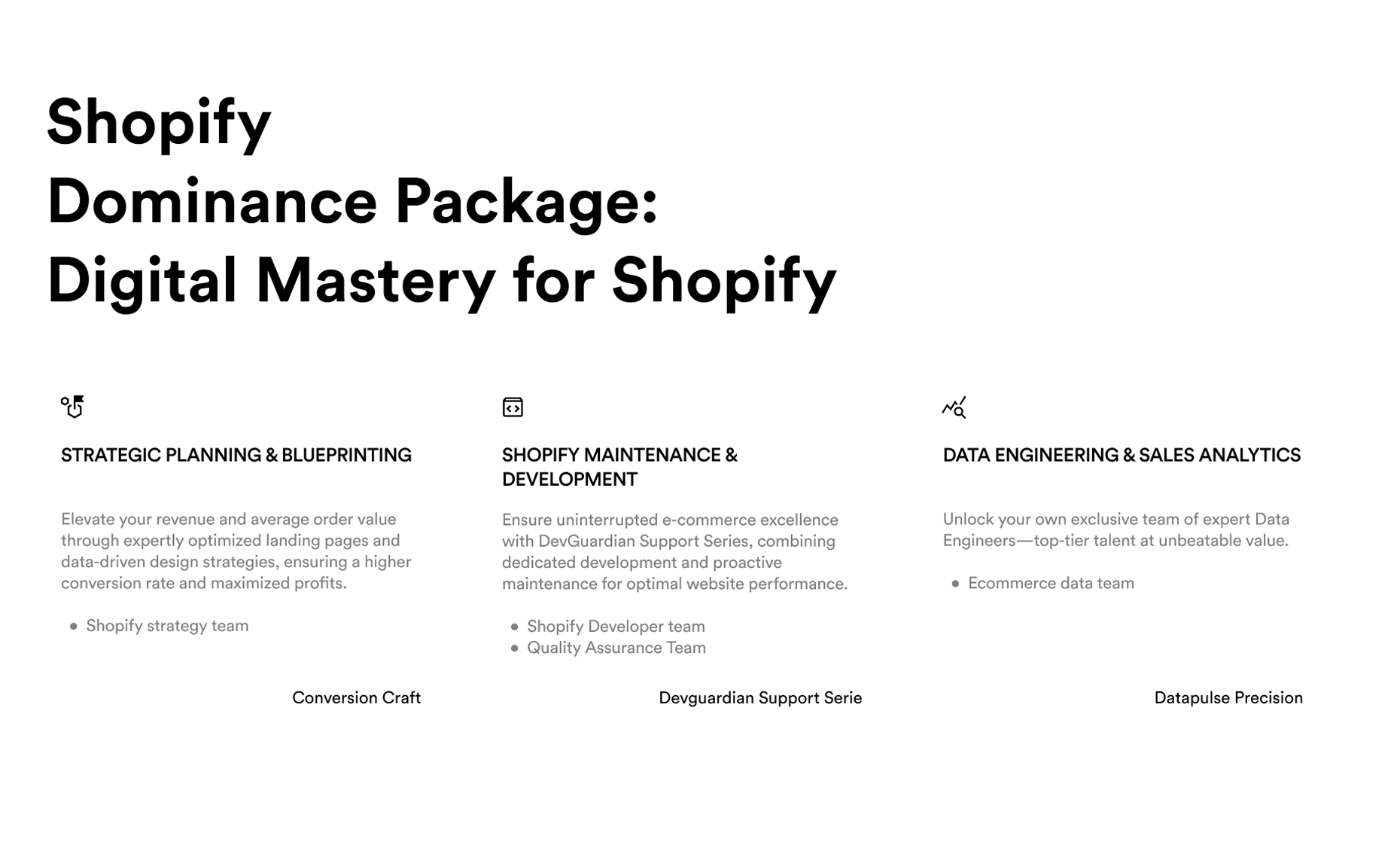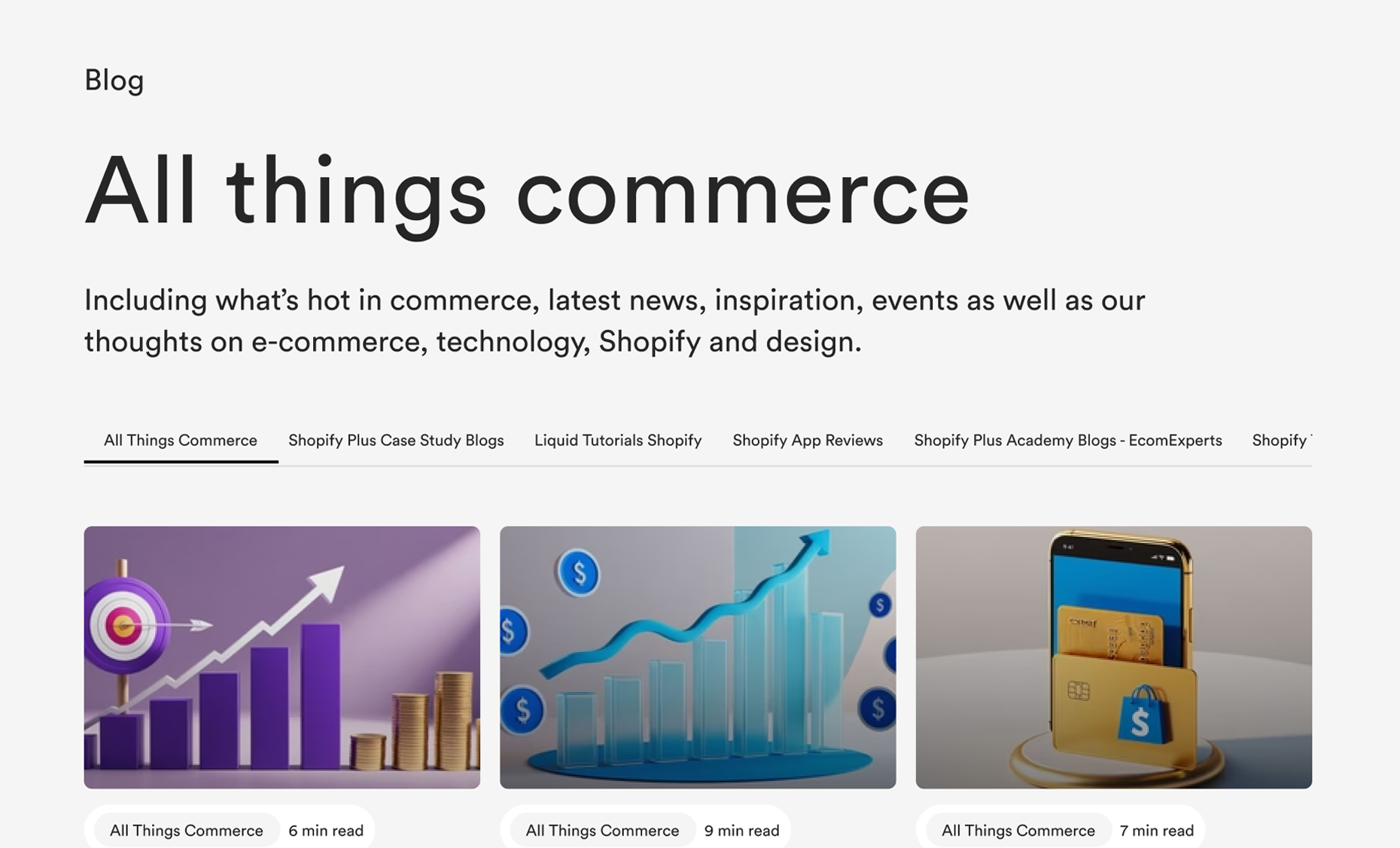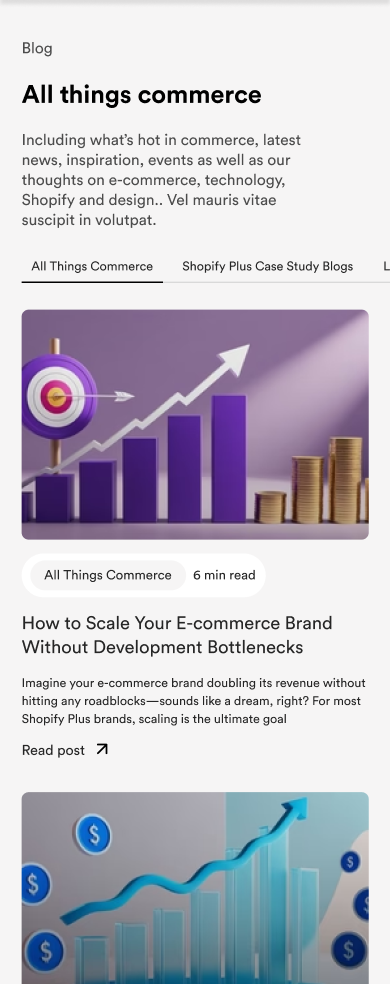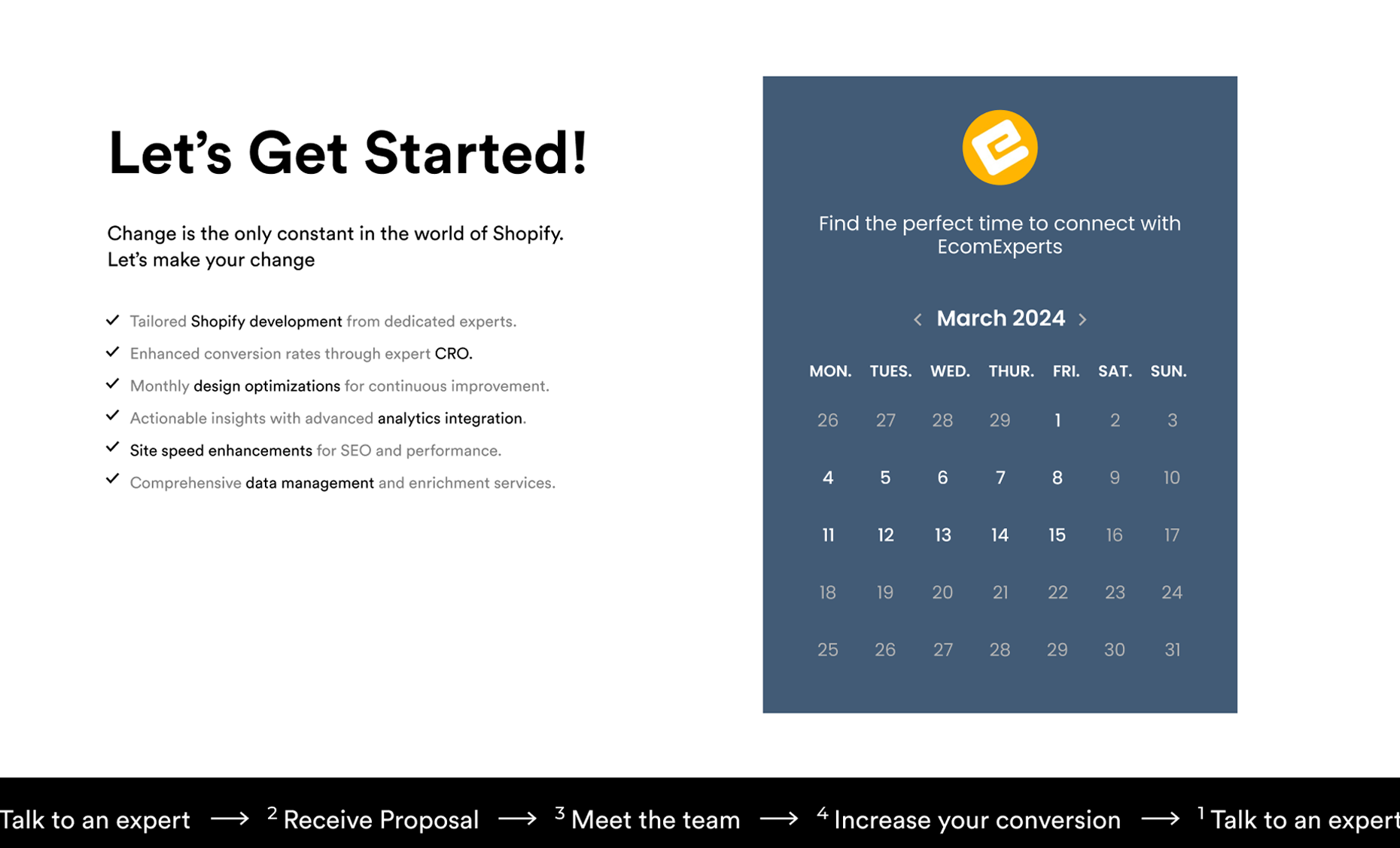
Learn how to optimize data fetching in Shopify using GraphQL.
In the world of e-commerce, a crucial factor for success is the ability to efficiently fetch and retrieve data. With the growing demand for faster and more dynamic user experiences, traditional methods of data fetching in Shopify stores may fall short. However, there's a powerful solution that can transform the way Shopify stores retrieve and update data - GraphQL. In this article, we will explore how you can leverage the benefits of GraphQL to enhance data fetching efficiency in your Shopify store.
Understanding GraphQL and its Benefits for Shopify Stores
In order to fully grasp the advantages of using GraphQL in a Shopify store, it's important to have a solid understanding of what GraphQL is and how it differs from other data fetching technologies. GraphQL is an open-source query language developed by Facebook that allows clients to request exactly the data they need, in a single request. This eliminates the over-fetching and under-fetching problems commonly encountered in RESTful APIs, resulting in reduced network overhead and faster data retrieval.

By adopting GraphQL in your Shopify store, you gain the ability to fetch multiple resources with a single query, reducing the number of network requests required. This not only improves performance but also simplifies the development process by eliminating the need to stitch multiple API responses together. Additionally, GraphQL provides powerful introspection capabilities, enabling you to explore the available data and their relationships.
Implementing GraphQL Queries in Shopify for Faster Data Retrieval
The core of GraphQL lies in its ability to retrieve data efficiently. In Shopify, you can harness the power of GraphQL queries to fetch specific data from your store's backend. By crafting well-structured queries, you can optimize data retrieval and minimize unnecessary data transfers.
One key advantage of using GraphQL queries is the ability to specify the fields you want to fetch. This means you can exclude irrelevant data and eliminate the need for subsequent filtering on the client side. By sending only the necessary information, you can significantly reduce the payload size and improve data fetching speed.
Another powerful feature of GraphQL queries is the ability to define aliases and fragments. Aliases allow you to request the same field with different names, enabling more flexibility in data retrieval. Fragments, on the other hand, allow you to reuse sets of fields across multiple queries, reducing redundancy and improving code maintainability.
Leveraging GraphQL Mutations for Efficient Data Updates in Shopify
Fetching data efficiently is only one part of the equation in an e-commerce store. Keeping data up to date is equally important to provide an exceptional user experience. This is where GraphQL mutations come into play.
With GraphQL mutations, you can easily update, create, or delete data in your Shopify store. Unlike traditional RESTful APIs, where separate endpoints are required for each type of action, GraphQL mutations allow you to perform multiple operations in a single request. This not only saves network overhead but also simplifies the implementation and maintenance of your data update logic.
Furthermore, mutations in GraphQL are strongly typed, meaning they are validated against your schema during development. This helps catch potential errors early on and ensures that only valid requests are executed, improving data integrity and reducing the chance of unexpected errors.
Optimizing Data Fetching with GraphQL Fragments in Shopify
As your Shopify store grows and evolves, the complexity of your data fetching needs may increase. In such cases, it's important to have effective strategies in place to optimize data fetching and minimize potential bottlenecks. One powerful technique in GraphQL is the use of fragments.

GraphQL fragments allow you to group reusable sets of fields and include them in your queries. By defining fragments for commonly fetched data, you can reduce redundancy and simplify query construction. This not only improves the readability of your code but also enhances maintainability by centralizing the definition of field selections.
Additionally, fragments provide a level of flexibility in data fetching. They allow you to define optional fields or include/exclude fields based on specific conditions. This can be extremely useful when dealing with dynamic data requirements, allowing you to fetch the necessary data based on runtime conditions.
Exploring the Role of GraphQL Schemas in Shopify Development
At the heart of every GraphQL implementation lies the schema - a contract that defines the available data and operations in your Shopify store. The schema serves as a central point for developers, providing a clear understanding of what can be queried or mutated.
In Shopify development, the schema plays a crucial role in maintaining data consistency and providing a self-documented API. By defining types, fields, and their relationships in your schema, you create a structured representation of your store's data. This not only facilitates communication between frontend and backend developers but also allows for automated code generation and documentation.
Furthermore, the GraphQL schema provides powerful introspection capabilities. With introspection, you can explore the available types, fields, and supported operations from within your development environment or tools. This can be particularly helpful when working with new or unfamiliar data structures, allowing you to understand the structure and relationships of your data without manually inspecting your backend code.
Enhancing Performance with GraphQL Subscriptions in Shopify
While traditional data retrieval methods such as RESTful APIs rely on the client continuously polling the server for updates, GraphQL introduces a more efficient approach - subscriptions. GraphQL subscriptions enable real-time data updates, allowing clients to receive updates as soon as they occur, without the need for continuous polling.
In a Shopify store, subscriptions can be used to notify clients about changes to specific data, such as inventory availability or order status. By defining subscription fields in your GraphQL schema, you can establish a connection between the server and clients, enabling bi-directional communication.
By utilizing GraphQL subscriptions in your Shopify store, you can enhance the responsiveness and real-time nature of your user experience. Whether you want to show live stock updates or real-time order tracking, subscriptions provide a powerful mechanism to keep your data in sync across clients.
Best Practices for Structuring GraphQL Queries in Shopify
When working with GraphQL queries in your Shopify store, it's important to follow best practices to ensure optimal performance and maintainability. Here are a few key guidelines to keep in mind:
- Minimize the number of round trips: Aim to fetch all the necessary data in a single query, rather than making multiple requests. This reduces network overhead and improves data retrieval speed.
- Optimize field selections: Only request the fields you need. Exclude irrelevant data to minimize payload size and improve query performance.
- Use aliases and fragments: Leverage the power of aliases and fragments to improve code readability and reduce redundancy in your queries.
- Avoid deep nesting: Deeply nested queries can lead to performance issues. Whenever possible, flatten your queries to reduce unnecessary join operations.
- Cache and batch requests: Take advantage of caching mechanisms and batched requests to further optimize data fetching in your Shopify store.
Integrating Third-Party APIs with GraphQL in Shopify
One of the strengths of GraphQL is its ability to integrate with various data sources and third-party APIs seamlessly. In a Shopify store, you might need to fetch data from external services or interact with APIs to provide additional functionality.
With GraphQL, you can easily integrate third-party APIs by creating custom resolvers. Resolvers act as connectors between GraphQL queries and the underlying data sources. By implementing custom resolvers, you can incorporate data from external APIs into your GraphQL schema and make it available for fetching.
This integration simplifies the development process by reducing the number of technologies and protocols required to fetch data from different sources. It also allows you to combine data from multiple APIs and present a unified view to your clients, improving the overall user experience of your Shopify store.
Troubleshooting Common Issues when Using GraphQL in Shopify
While GraphQL offers many advantages for data fetching in Shopify stores, it's important to be aware of common issues and potential pitfalls that may arise during implementation. Here are a few common challenges and how to address them:
- Over-fetching and under-fetching: Be mindful of the data you request and make sure you're only fetching what you need. Avoid fetching unnecessary fields or making redundant queries.
- Schema maintenance: As your Shopify store evolves, make sure to update your schema to reflect the latest changes. Failing to do so may result in errors or inconsistencies.
- Performance bottlenecks: Monitor the performance of your GraphQL requests and optimize them if necessary. Consider implementing caching mechanisms or applying indexing strategies to improve query response times.
- Error handling: Define clear error messages and provide meaningful feedback to clients when issues occur. Handle errors gracefully and ensure they don't expose sensitive information.
Future Trends and Innovations in GraphQL for Shopify Stores
As the adoption of GraphQL in Shopify stores continues to grow, it's worth exploring the future trends and innovations that may shape the landscape of data fetching even further. Here are a few areas to keep an eye on:

- Real-time analytics: Leveraging GraphQL subscriptions, stores can gather real-time analytics data and provide insights to merchants instantly.
- Pagination and cursor-based fetching: GraphQL's flexibility allows for efficient pagination techniques, improving the scalability of data fetching operations.
- Automatic cache management: Tools and libraries are being developed to simplify cache management in GraphQL, further optimizing data retrieval and reducing network overhead.
- Enhanced tooling and IDE support: The GraphQL ecosystem is evolving rapidly, with new tools and IDE integrations being introduced to streamline development workflows and enhance developer productivity.
By staying informed about these trends and innovations, you can ensure that your Shopify store remains at the forefront of efficient data fetching. With GraphQL's flexibility and growing ecosystem, the possibilities for optimizing data retrieval are endless.
In conclusion, GraphQL provides a powerful solution for efficient data fetching in Shopify stores. By understanding its benefits, implementing optimized queries, leveraging mutations, and using advanced features like fragments and subscriptions, you can significantly enhance the performance and responsiveness of your store. Additionally, by following best practices, integrating third-party APIs, troubleshooting common issues, and staying updated on future trends, you can stay ahead of the curve and continue to deliver exceptional user experiences to your customers.











